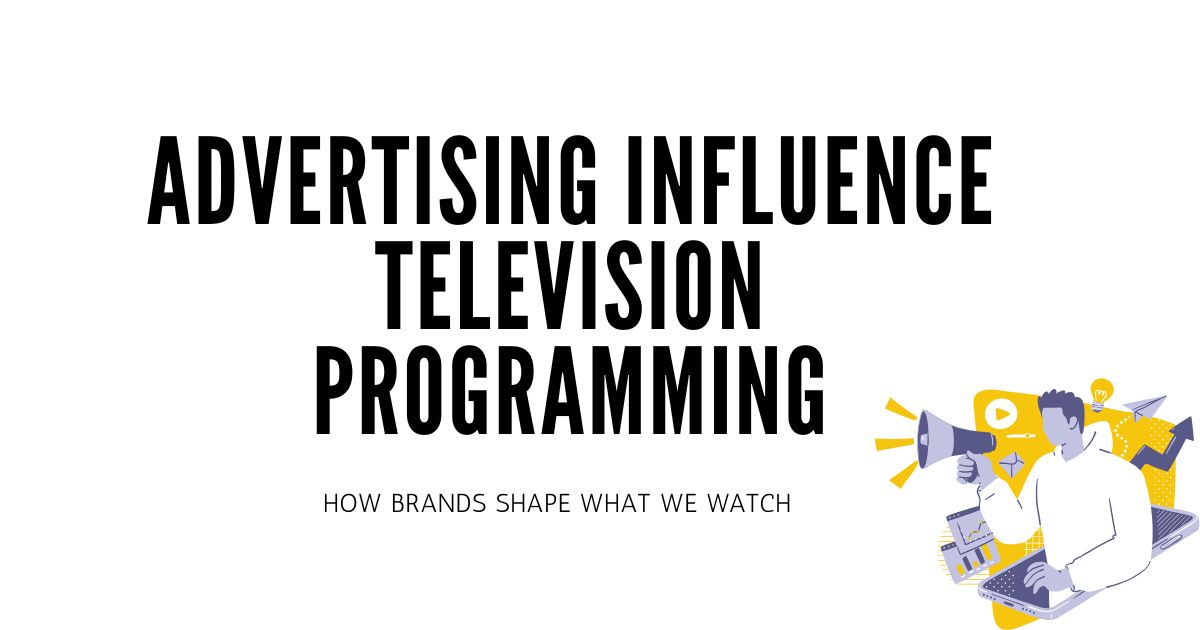Television and advertising have been intertwined since the medium’s earliest days. What many viewers don’t realize is just how deeply advertising shapes what they watch, when they watch it, and how shows are created. Understanding this relationship reveals the complex business machinery behind your favorite programs.
This exploration of advertising’s influence on television will uncover the financial mechanisms that drive programming decisions, examine how commercials shape content creation, and reveal the evolving strategies networks use to balance advertiser demands with viewer preferences.
The Financial Foundation: How Advertising Revenue Drives Television
Television operates on a fundamentally advertising-driven business model. Networks sell airtime to advertisers, who pay based on expected viewership numbers. This creates a direct link between advertising revenue and programming decisions.
The Economics of Prime Time
Prime time slots command the highest advertising rates because they attract the largest audiences. A 30-second commercial during a popular evening show can cost hundreds of thousands of dollars. This premium pricing creates intense pressure on networks to fill these slots with programming that will attract maximum viewership.
Networks analyze demographic data extensively to understand which shows attract the most valuable audiences to advertisers. Shows that appeal to consumers aged 18-49 with disposable income often receive renewal priority, regardless of their artistic merit or critical acclaim.
Advertising as Content Curator
The need to attract advertisers directly influences which types of shows get produced. Family-friendly programming often receives preference because it appeals to a broader advertiser base. Controversial or niche content may struggle to find sponsors, limiting its chances of reaching the airwaves.
This dynamic creates a feedback loop where programming becomes increasingly focused on attracting advertiser-friendly demographics, potentially limiting creative diversity and experimental content.
Programming Strategy: How Commercials Shape Show Structure
Television programming must accommodate commercial breaks, fundamentally altering how stories are told and structured.

The Commercial Break Formula
Most hour-long television dramas follow a predictable structure designed around commercial breaks. Shows typically include:
- An opening hook to grab attention before the first commercial
- Cliffhangers or tension points before each commercial break
- A strong closing moment to maintain viewer loyalty for the following week
This structure has become so ingrained that it influences storytelling even on commercial-free platforms. Many streaming services still follow traditional television pacing, demonstrating how deeply advertising has shaped the medium’s DNA.
Content Length and Pacing
Commercial television shows must fit specific time slots, minus commercial time. This creates rigid constraints on storytelling. A one-hour time slot typically includes 42-44 minutes of actual programming, with the remainder devoted to commercials and promotional content.
These time constraints force writers and producers to compress narratives, sometimes sacrificing character development or plot complexity to fit commercial television’s demands.
Target Demographics: The Advertising-Driven Audience Strategy
Understanding how advertising influences television requires examining how networks identify and target specific audience segments.
The 18-49 Demographic Dominance
Television advertising rates are primarily based on viewership within the 18-49 age demographic. This group represents consumers with the highest spending power and brand loyalty flexibility. Shows that attract this demographic command premium advertising rates, creating a programming bias toward content that appeals to this age group.
This focus can marginalize programming for older or younger viewers, as shows targeting these demographics often generate lower advertising revenue despite potentially having dedicated audiences.
Geographic and Cultural Considerations
Advertisers also influence programming by preferring content that appeals to national rather than regional audiences. Shows with strong local or cultural specificity may struggle to attract national advertising dollars, limiting their commercial viability.
This dynamic can homogenize television content, favoring programming with broad appeal over culturally specific or geographically targeted shows.
Product Placement and Integrated Marketing
Modern television extends advertising influence beyond traditional commercial breaks through product placement and integrated marketing strategies.
Subtle Brand Integration
Product placement has evolved from obvious brand displays to sophisticated integration where products become part of the storyline. Characters use specific smartphones, drive particular car models, or frequent branded restaurants as part of their natural behavior.
This integration creates a more seamless advertising experience but also blurs the line between entertainment and marketing, potentially influencing viewer perceptions without explicit acknowledgment.
Branded Content and Sponsorships
Some television programming is created specifically to promote particular brands or products. Cooking shows may feature specific appliance brands, travel shows might highlight particular destinations or hotel chains, and lifestyle programs often showcase specific retail brands.
These arrangements create content that serves dual purposes: entertaining viewers while promoting specific commercial interests.
The Digital Revolution: How Streaming Changes Advertising Influence
The rise of streaming platforms has disrupted traditional advertising models, creating new ways that advertising influences television content.
Subscription Models vs. Advertising Revenue
Streaming platforms that rely on subscription revenue rather than advertising have greater creative freedom. Netflix, for example, can produce content that might not attract traditional advertisers because their revenue doesn’t depend on commercial sales.
However, even subscription services are increasingly incorporating advertising tiers, bringing traditional advertising pressures back into the streaming environment.
Data-Driven Content Creation
Streaming platforms use viewer data to make programming decisions, creating a new form of advertising influence. Shows are greenlit based on their ability to attract and retain subscribers, which can be measured with unprecedented precision.
This data-driven approach can lead to more targeted content creation but may also result in algorithmic decision-making that prioritizes engagement metrics over creative innovation.
International Markets and Advertising Influence
Television programming must also consider international advertising markets, which adds another layer of complexity to how advertising influences content.
Global Advertising Standards
Shows intended for international distribution must navigate different advertising standards and cultural sensitivities across markets. Content that might be acceptable to advertisers in one country could be problematic in another, leading to programming decisions that accommodate the most restrictive markets.
Format Adaptation and Advertising Models
Television formats are often adapted for different countries, with advertising models influencing how these adaptations are structured. Shows may be lengthened, shortened, or restructured to fit different countries’ advertising standards and commercial break patterns.
The Future of Advertising and Television
Emerging technologies and changing viewer habits are reshaping how advertising influences television programming.

Interactive and Addressable Advertising
New advertising technologies allow for more targeted and interactive commercial experiences. Viewers can engage directly with advertisements or receive personalized commercial content based on their viewing history and preferences.
These developments may reduce the need for programming to appeal to broad demographics, potentially allowing for more niche content creation.
Measurement and Analytics Evolution
Advanced analytics are providing more sophisticated measurements of advertising effectiveness, potentially changing how advertising influences programming decisions. Networks can now track viewer engagement, brand recall, and purchase behavior with greater precision.
This enhanced measurement capability may lead to more nuanced understanding of what types of programming effectively serve advertising goals.
Understanding Television Through Its Commercial Reality
The relationship between advertising and television programming is complex and multifaceted. Advertising doesn’t just pay for television content—it fundamentally shapes what gets produced, how stories are told, and which audiences are prioritized.
This influence isn’t inherently negative, but understanding it helps viewers make more informed decisions about their media consumption. Recognizing how advertising shapes television can enhance media literacy and help audiences critically evaluate the content they consume.
As television continues to evolve with new technologies and distribution methods, the relationship between advertising and programming will undoubtedly continue to change. However, the fundamental economic reality that content creators must attract financial support—whether through advertising, subscriptions, or other revenue models—will continue to influence programming decisions.
The most successful television programming finds ways to balance commercial requirements with creative integrity, producing content that serves both advertiser needs and audience desires. Understanding this balance provides valuable insight into how television operates as both an artistic medium and a commercial enterprise.
Advertising has long shaped what we see on TV, influencing everything from show formats to airtime. As media habits shift, video marketing has become the modern parallel—strategically crafted to capture viewer attention and drive real results. Exploring both can give you a clearer picture of how content and promotion work hand in hand across platforms.”





